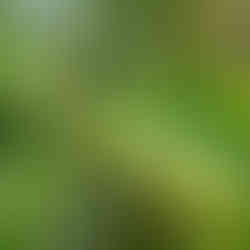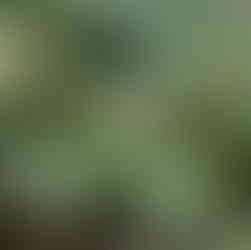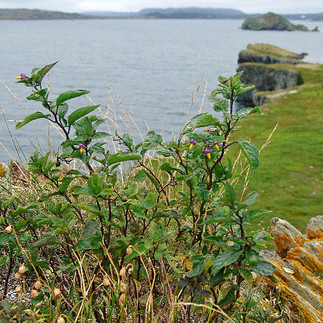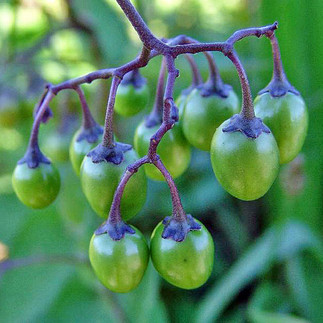There are a number of berries that can be found on the island of Newfoundland, and while many of them are edible, there are also a few poisonous varieties. In this guide, we'll take a look at the different types of Newfoundland berries, when they can be picked and the best landscapes to look for when trying to determine good berry picking grounds. We'll also cover which berries are tasty on their own and which ones need to be processed to really be enjoyed.
We hope you find this guide helpful in your foraging endeavours.
DID YOU KNOW?
Newfoundland's wild berries are a true delight for Newfoundlanders, nature lovers and food enthusiasts alike. And at Upper Humber Settlement, we offer more than just a taste of these local treasures—you can immerse yourself in the art of jam-making, using the freshest berries handpicked from our surroundings.
Readers of our blog can now enjoy a 15% discount with the code BLOG15.
Don’t miss out on this sweet offer!
Why Newfoundland is so Good for Picking Berries
Newfoundland is a great place to pick berries due to the large variety of wild berries that can be found here. If you want to grow berries yourself or find foraging locations around the island, you'll almost certainly have a lot of choices and plenty of berries to pluck.
Depending on which part of the island you are on, the land will receive anywhere between 40-60 inches of rain a year, with the majority of this precipitation falling between October - March. This provides plenty of hydration for these water-intensive plants to thrive, as well as a good growing season because the summer months receive slightly less rain and a lot more daylight encouraging the plants to grow.
Not only does Newfoundland receive more than enough rainfall but it also has an extremely diverse landscape. On the south coast, you will find more sandy loam soils that are highly fertile with great drainage, ideal for growing raspberries and blackberries. Throughout much of the west coast and central you will find boreal forests high in acidity that are great for growing blueberries, partridge berries, cloudberries and more.
Depending on the sort of berry you are searching for, all you have to do is travel a few hours and the surroundings and terrain will be totally different and perfect for a different sort of berry.
Length of Season
Generally speaking, the peak picking season for most Newfoundland berries is from mid-July to mid-September.
The picking season for Newfoundland berries varies depending on the type of berry. Some, like strawberries, can be picked as early as late June or early July, while others, like partridge berries, don't become full flavoured until after the first frost. Depending on the year, this could be anytime from October to early December. Most berries are picked in late summer and early fall.
Edible Wild Berries In Newfoundland
Strawberry
Wild strawberries are found throughout Newfoundland and are a delicious addition to any summer dessert. They are the earliest berries to start ripening in Newfoundland, starting to be edible around early to mid-July.
There are a few different types of wild strawberries that can be found in Newfoundland;
Wild Strawberries (Fragaria virginiana), can be found on grassy hill outcrops all over the island as long as there is good drainage.
Woods strawberries (Fragaria vesca) much like the wild strawberry, they like sandy well-drained loam for growing conditions, but being a bit hardier you can find these along embankments, hillsides, stone- and gravel-laid paths, meadows, sparse forest, and most clearings. These will likely be the easiest strawberries to find around Newfoundland.
White Strawberries. also known as Alpine Strawberries. These Strawberries are not very common throughout the island and you may need to be pretty lucky to find them. You will also need to be in the more alpine regions of the Island on the West Coast.
The berry picking season for all of these strawberries is from mid-June to early July and after that most have fallen off the runner.
(Images from Dark Tickle & Twillingate Tourism)
Cloudberry/ Bakeapples
Cloudberries, also known as bakeapples throughout most of Newfoundland and by all sorts of other names throughout the world, from salmonberry, yellowberry, bakeberry, or malka are a Newfoundland delicacy. These little berries have a somewhat sour/bitter flavour to them and are usually used to make jams and spread for desserts.
Where to pick bakeapples in Newfoundland?
Cloudberries/bakeapples like to grow in moist tundra locations as well as bog habitats and heaths, because Newfoundland is covered with a lot of this type of terrain, it's a great location to find some of these rare, delicious berries.
Some of the best places to pick cloudberries in Newfoundland is on the Great Northern Peninsula because it is covered in low-lying wetlands and bogs. With that said, don't get ahead of yourself thinking you will pick an abundant amount of them as they only grow 1 berry per runner and are scattered throughout bogs and wetlands.
The harvesting season for these berries is normally between late August and mid-September.
You can also shop for Bake Apple Jam on the Dark Tickle Website.
(Images from newfoundland-labradorflora.ca, northernbushcraft.com, foodal.com)
Black Currents
Black Currents also known as prickly currant, black swamp gooseberry, and black gooseberry can be found all throughout Newfoundland and are highly distinguishable as they grow in clusters like grapes on a vine.
These berries tend to be tart and not the best for eating and if eaten in large quantities can cause an upset stomach and diarrhea. Although this might not sound great their seed are high in nutrients and as long as you don't eat a large amount, you should be ok.
The berries grow on a shrub that grows to be about 1-2 meters tall and in moist foothill environments, which the west coast has in abundance.
The picking season for these berries is around mid-July to mid-August.
(Images from northernbushcraft.com & naturallivingideas.com)
Black Huckleberry
Black Huckleberries, also known as bilberry, whortleberry, or hurtleberry, are small black berries that grow on individual stems and look very similar to blueberries. They are sweeter than Red Huckleberries and grow in subalpine areas than contain acidic soils ranging in elevations between 200-4000 feet above sea level.
Many birds and animals, as well as humans, like these delicious little berries and can be eaten fresh, frozen or turned into an assortment of goodies such as pie, crisps, muffins and jams.
When to pick huckleberries in Newfoundland
Black Huckleberries ripen between Mid August and Mid September and are a great little treat to find while you are out on a hike.
If you want to learn more about Black Huckleberries click here.
Blueberry
There are many varieties of wild blueberries throughout Newfoundland from Lowbush blueberry otherwise known as (Vaccinium angustifolium), Bog blueberry or (Vaccinium uliginosum), Dwarf blueberry or (Vaccinium caespitosum), Velvetleaf blueberry or (Vaccinium myrtilloides) and Oval-leaf blueberry or (Vaccinium ovalifolium).
All of these blueberries are delicious when ripe and grow in abundance throughout the province. The best place to find them is in areas where the lumber industry has gone and logged all the forest in an area. This is because blueberries like to grow in acidic, well-drained, loose soils with a high organic matter content exactly what a forest that just had all its trees cut down would provide. Normally blueberries are one of the first plants to come back after the deforestation of the area so anywhere between 2-4 years after the forestry goes through an area you will get an abundant amount of blueberries to pick.
When is Blueberry season in Newfoundland?
The best time to pick blueberries is between late August all the way to the end of September. But start early because Newfoundlanders love to pick blueberries and any good spot may already be picked out!
(Images from northernbushcraft.com & newfoundland-labradorflora.ca)
Bunch Berry
Bunch Berries, also known as Dwarf Dogwood, Dogwood Bunchberry, Pudding Berry, red Cracker berry, Creeping Dogwood, and Dwarf Cornel, belong to the Cornus canadensis family and are small, red, low-lying perennial plants that can be found either individually or growing in a "Bunch".

They can be found in different soil qualities, nutrients, and PH levels meaning they will grow in all sorts of forest types from coniferous, and mixed forests, as well as some wetlands making them a very abundant berry throughout the island. If you want to forage for bunch berries, a simple walk into any forest around the island and keep your eyes on the ground for four-leaved, 3-inch tall stalks with clustered red berries.
Bunch Berries have a very mild taste making them not very desirable to be eaten on their own, but are great to be turned into preserves or added to jams, pudding, teas and other berry pastries as a filling additive. They are also high in flavonoids and vitamin C as well as pectin making them great to add to other fruits that are low in pectin for creating jams and jellies.
These berries are typically ripe for picking by August and the harvest season extends to the end of September or early October. Make sure to get them when they are ripe as unripe bunch berries can cause stomach cramps.
If you are looking to learn more about bunch berries check out this post by wildadirondacks.
(Images from newfoundland-labradorflora.ca)
Chokecherry
Chokecherries, also known as Aronia berries, are flowering shrub that grows to be about 25 feet tall growing in bunches like grapes. These berries are not picky about their growing conditions and will grow in loamy, sandy, and clay soil and can tolerate both slightly acidic and slightly alkaline soil pH. This means you can find these berries growing all throughout the island.
Picked when ripe, these berries have a bitter or sour flavour to them so are generally not eaten on their own. Their seeds also contain amygdalin which breaks down into cyanide in your stomach making them toxic if consumed in large amounts (the seeds that is). The flesh is fine which is why most people process chokecherries, removing the seed, using the rest to create pie, juices, jams, vinegars, and fruit leather.
Because Chokecherries go bad fairly quickly once ripe, Native Americans used to make Chokecherry Patties where they would pound the berries, pit and all, into a paste and dry them in the sun. It was thought that the Sunlight would denature the Cyanides in the seeds making it ok to eat and add an almond flavour to the patties or Wojapi (Chokecherry pudding/jam).
Chokecherries become ripe once they turn from red to dark purple. This normally happens around Mid August into early September. Remember don't eat the seeds!!!
If you want to know more about chokecherries check out the practical self-reliance website.
(Images from MUN Botanical Gardens/ NatureWatch, askdifference.com, northernbushcraft.com )
Cranberry, also known as Marshberry in Newfoundland
The cranberries that grow in Newfoundland are Bog Cranberries and Lingonberries and grow on vines in low-lying wetland areas. They also go by squash berries in Newfoundland depending on who you are talking to.
These only grow under specific conditions which include acid peat soil, an adequate fresh water supply, and a growing season that extends from April to November. They normally stay on their vine year round unless picked by an animal or human only to fall off the year after when new berries start to grow.
Cranberries have a tart sour flavour to them but the flavour usually improves once cooked or frozen. They are used in all sorts of ways from dried for storage, juiced, made into spreads, or used in muffins and other pastries.
The harvest season for cranberries is between late September and early November and you better get your hip waders because you're going in the bog.
(Images by northernbushcraft.com, darktickle.com,)
Crowberry
Crowberries, also known as mossberries, are a flowering plant species that grow on shrubs in shady dry areas, tundra, muskeg and forests. These berries have a glossy black colour to them and grow in a 1/3 inch diameter berry and often stay on the bush throughout the entire winter.
With a bit of a bland taste, these berries are not normally picked in large quantities but their flavour does improve if cooked, frozen or with some added pectin you can make some delicious flavoured jam. If you want to use another berry for the pectin try using some bunch berries.
Crowberries have a very long harvest season. Starting to become ripe by the end of July and are pickable and tasty until they are covered in snow.
(Images from newfoundland-labradorflora.ca )
False Solomon's Seal
False Solomon's Seals also known as (feathery false lily of the valley) get its name from its slight resemblance to another plant called Solomon’s seal. False Solomon Seals grow in the same type of conditions as Solomon Seals which is moist, rich, well-drained soils in partial to full shaded areas, they will also tolerate drier, rockier conditions as long as the growing medium has adequate drainage. The fruiting stage of this plant happens after the flowers of its seasonal growth fall off, exposing clusters of small green berries which slowly change over the summer into translucent red or red and purple-marked berries indicating that they are ripe for the picking.
These berries have a very different flavour profile which is quite unexpected. At first, they taste almost like molasses sweet then fades into an overbearing bitter/acrid flavour. In traditional medicine, the roots of the False Solomons seal were used to brew a tea to treat coughs and constipation and the young shoots can be added to any dish adding an asparagus-like flavour. The berries, on the other hand, are not used to make much because of their acrid flavour but you can make jelly or jams from them adding sugar to cut the bitterness.
Falso Solomon Seals will ripen by the end of September and are good to pick into the winter.
Gooseberry
Gooseberries are also known as goldenberry or ground cherry are a common name for many types of ribes, also known as currants. They can come in many types of colours from green, orange, red, purple, yellow, white, or black and can be picked at any time of the year and left to ripen. These plants can tolerate many types of soil conditions as long as the soil remains moist during fruiting (but not waterlogged) and there is enough nutrients in the soil to meet their growing demands.
Gooseberries come in a variety of flavours ranging from very sweet to extremely tart depending of the stage at which you pick and eat them. Early in their growth gooseberries taste very tart and as they ripen the sugars increase making them a much more sweet and enjoyable fruit.
The best time to pick these berries is from late June to early July when they are fully ripe and sweet. You will know they are ripe by squeezing them gently between your fingers and if they are not hard they are ripe.
If you are looking for a great guide to gooseberries check out this blog post by mashed.
***Note if you eat too many you will get an upset stomach
(Images from anniesremedy.com, homestratosphere.com, northernbushcraft.com)
Hawthorn Berry
Hawthorn Berries also known as quickthorn, thornapple, May-tree, whitethorn, Mayflower, or haw berry grow on a small tree with long sturdy thorns and are part of the rose family. Be careful when picking not to get poked in the eye as they have caused blindness in people for just that. Hawthorns generally grow in dense thickets that have moist, deep, and fine soil textures.
The berry itself has a mealy texture exhibiting a tart but slightly sweet taste if you can get past the seed texture. The berries have cyanide bonded with sugars, called amygdalin just like the chokecherries meaning that the seeds if eaten in large quantities can be poisonous. Otherwise, the rest of the berry can be used for jams, jellies, and baked goods once the seed has been removed.
These berries start to become ripe for the picking by mid-September and get better throughout the month until the end of October.
(Images from outdoorsandonthego.com, cbc.ca, darktickle.com)
Partridge Berry
Partridge berries in Newfoundland and Labrador, also known as Twinberry, Deer Berry, and Squaw Berry in other parts of the world are an evergreen plant that grows on a non-climbing vine with 15-30cm long stems and grows to be about 6 cm tall. The optimal growing conditions for partridge berries is in well-drained, mineral soils that are rich in organic matter with a soil pH of 5.0. They are normally found in Boreal forests and in cooler climates so Newfoundland has pretty much perfect growing conditions for these berries
The berries have a sour/tart/slightly sweet flavour and are eaten raw or used to make sauce, juice, jam, wine and baked goods. My personal favourite is adding them to muffins along with blueberries for a kind of sweet and sour muffin.
The best time to pick Partridge berries is after the first frost normally in late October or early November in high-elevation locations around Newfoundland. This is because the frost brings out the sweet flavour of the berry. Otherwise, they are ready to be eaten anytime after late September.
If you are interested in growing Partridge berries check out this PDF put out by the Newfoundland Government.
(Images from newfoundland-labradorflora.ca)
Twisted Stalk
Twisted Stalk, also known as watermelon berry, is a herbaceous perennial plant that grows to be about 40-100cms tall with alternate, oblong-lanceolate leaves that are 5–14 cm long. This plant is a creeping plant that grows in moist locations that have lots of dense undergrowth.
The berries on a twisted stalk have a pretty mild favour sort of like a cucumber. Although not often used consumed because of its mild flavour First Nation's cultures used this plant for medicinal purposes from poultices for cuts, to inducing labour in overdue pregnancies, and using the berry juice to treat burns. If you do pick a large number of these berries try turning them into a syrup to better bring out the full flavour of these mild berries.
Twisted stalks berries become ripe in early fall around the first few weeks of September.
Note Watermelon berry seeds are known to be a natural laxative so be careful eating a lot of these berries while you are picking them.
Poisonous Berries in Newfoundland
Although Newfoundland does not have many poisonous berries, it is good to know which berries you should avoid picking while out foraging for the day.
Below is a list of berries to steer clear of while out in the woods.
(Images from gobotany.nativeplanttrust.org )
Black Nightshade
Black Nightshade grows to be about 30 to 120 cm high, with round, slender, hollow, branching stems that are slightly hairy and sometimes show purple at the joints. The berries grow to be about 6-8 mm in diameter and have a dull black to a purple-black colour to them and need PH levels of 5.5 to 6.5 in order to grow with lots of organic matter, water and nutrients.
The compound that makes these berries toxic is called solanine and can be fatally toxic to children especially if they are eating them when they are unripe. Otherwise, the plant is rarely fatal, with ripe berries causing symptoms of mild abdominal pains, vomiting, and diarrhea and effects being felt 6-12 hours after ingestion.
(Images from digitalnaturalhistory.com)
Climbing Nightshade
Climbing Nightshade, also known as bittersweet, bittersweet nightshade, bitter nightshade, blue bindweed, Amara Dulcis, fallenwort, felonwood, poisonberry, poisonflower, scarlet berry, snakeberry, trailing bittersweet, trailing nightshade, violet bloom and woody nightshade is a very woody herbaceous perennial vine that takes over other plants in the area and is capable of reaching a height of 4 m if there is enough supporting vegetation for it to grow off of. The fruit from this poisonous plant is an egg-shaped red berry that is soft, juicy and when ripe have a smell that resembles that of a tomato.
This plant has the same toxins and toxin levels are the black nightshade in the province so the same conditions apply.
(Images from https://en.wikipedia.org/wiki/Daphne_mezereum)
Daphne Berry
Daphne Berry also known as Daphne mezereum, mezereon, February daphne, spurge laurel or spurge olive is a deciduous shrub that grows up to 1.5m tall and likes to grow in medium to high elevations generally in limestone-based soils.
These berries are bright red and grow to be about 7-12 mm in diameter and are very poisonous to humans. The toxins in these berries are called mezerein and daphnin and are present in the berries and twigs of the plant. Symptoms of poisoning by this berry include a rash if handled without gloves on that can even resemble eczema and a choking sensation if ingested. A few hours after ingestion the person will experience severe irritation and a burning sensation in the mouth, with swelling of the lips and face, increased salivation, hoarseness and difficulty in swallowing. These symptoms are soon followed by severe abdominal pains headache, numbness, nausea and bloody diarrhea. If enough of these berries are ingested they can be fatal.
(Images from newfoundland-labradorflora.ca/ & Michael Burzynski)
Mistletoe
Mistletoe attaches itself to a host tree or shrub which it extracts water and nutrients from, stunting the host plant's growth and potentially killing it over time. The berries of the mistletoe plant can either be white or red and are mildly toxic to humans and usually not fatal. The symptoms of mistletoe poisoning are blurred vision, diarrhea, nausea and vomiting. With less common symptoms of seizures, hypertension, and even cardiac arrest.
If you are interested in other poisonous plants in Newfoundland check out this PDF that the Newfoundland government put out.
(Images from newfoundland-labradorflora.ca)
Thin-leaved Snowberry
Snowberries are also known as creeping snowberry, waxberry, ghostberry, or Symphoricarpos and are commonly found in forests, dry or moist openings, rocky hillsides or near riverbanks and streams. These berries only made the toxic list because of their levels of saponins which if consumed in excess can be toxic. But was frequently used by a number of First Nations tribes as a medical treatment for a number of ailments. Snowberries are known to be disinfectant, laxative, and diuretic and have the ability to reduce fever. They also have anti-inflammatory properties and help lower cholesterol.
These little white berries have a minty flavour to them and when broken open the interior looks like fine, sparkling granular snow.
There. Now you’re all up to date about the incredible selection of Newfoundland berries, which ones are good to eat and which are not. We hope this gave you some guidance about where to forage or harvest your berries and ideas about what you can make with them.
Did you know that Upper Humber Settlement offers jam-making experiences?
Want to take your love of berries to the next level? Book a spot for our jam-making experience at Upper Humber Settlement, where you can learn how to preserve the flavor of Newfoundland's wild berries and create your own batch of homemade jam!
Readers from our blog now receive a 15% discount with discount code BLOG15
Don't miss out on this sweet deal!

If you're unable to join us for the hands-on experience, don’t worry! You can still enjoy the same delicious jams crafted from Newfoundland’s finest wild berries in our Honesty Market or through Western NL FoodHub.
.png)
















































































































